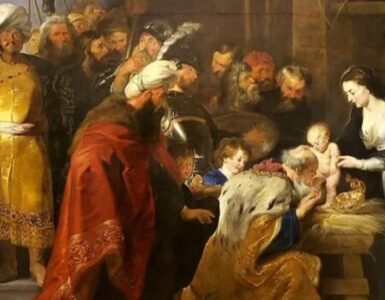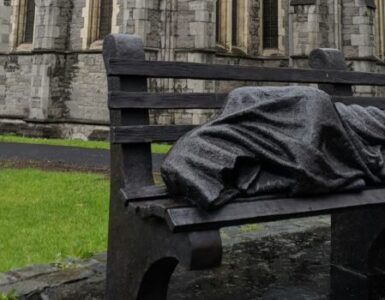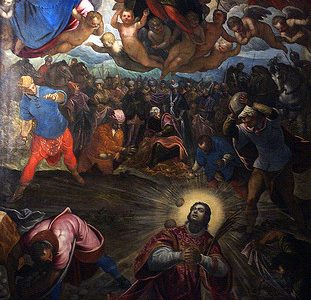The recent doctrinal note of the Dicastery for the Doctrine of the Faith (DDF) concerning “the Spiritual Experience Connected with Medjugorje” has created some confusion. The confusion seems to be due not so much to what the document says as to a misunderstanding on the part of many readers of how the Church discerns supernatural phenomena and how such phenomena are related to divine revelation.
Vatican II teaches that “the Christian economy, since it is the new and definitive covenant, will never pass away; and no new public revelation is to be expected before the glorious manifestation of our Lord, Jesus Christ” (Dei Verbum, 4). In other words, God’s will to reveal to us that, in the Holy Spirit, we have access to the Father through Christ, the Word made flesh, and that we thus become sharers in the divine nature (cf. DV, 2), has been fully accomplished in Christ, “the Father’s one, perfect, an unsurpassable Word” (Catechism of the Catholic Church, 65), such that in Him, God “has said everything; there will be no other word than this one” (Ibid).
In practical terms, this means that all the wisdom needed to follow Jesus and all the grace needed to attain eternal life are available through God’s Word in the holy Scriptures, the Sacraments, and the teaching of the Apostles transmitted through their successors, the bishops. Anything that helps us understand Christ’s teaching more thoroughly, contemplate it more deeply, and follow Christ more faithfully is welcomed and encouraged.
The greatest of such aids is the saints who have “preceded us into the kingdom” (CCC, 2683). By coming to know the saints and imitating them, we are assisted on the road to holiness. And no saint helps us on that road more than the Virgin Mary, “the Church’s model of faith and charity,” for not only is she the “preeminent and…wholly unique member of the Church,” but the very “exemplary realization (typos)” of the Church (CCC, 967; cf. Lumen Gentium, 53 and 63).
Accordingly, the Church takes any alleged apparition of the Virgin Mary very seriously. Medjugorje—a village in Bosnia and Herzegovina where six children began reporting visions of Our Lady in 1981—is no exception. After lengthy, thorough, and controversial investigations into the phenomena, the Church has granted a nihil obstat, which the Norms for Proceeding in the Discernment of Alleged Supernatural Phenomena (2024) define in this way:
Without expressing any certainty about the supernatural authenticity of the phenomenon itself, many signs of the action of the Holy Spirit are acknowledged “in the midst” of a given spiritual experience, and no aspects that are particularly critical or risky have been detected, at least so far. For this reason, the Diocesan Bishop is encouraged to appreciate the pastoral value of this spiritual proposal, and even to promote its spread, including possibly through pilgrimages to a sacred site.
Some who are deeply convinced of the authenticity of the apparitions at Medjugorje find difficulty with the first part of this definition. They would like a full-blown endorsement and an affirmation of their supernatural origin. Yet, precisely because of her teaching on the definitiveness of divine revelation, the Church has not felt and will never feel compelled to make such a declaration about the alleged apparitions in Medjugorje or anywhere else.
Pope Benedict XVI explained the reason for utilizing a nihil obstat to assess alleged apparitions, writing that the faithful “are authorized to give [the phenomenon] their adhesion in a prudent manner,” for the phenomenon can be “a help which is proffered, but its use is not obligatory” (Verbum Domini, 14). The DDF’s Norms further explain that if a discernment process were directed toward a definitive declaration of “supernaturalness,” it would carry “high expectations, anxieties, and even pressures.” Conversely, a nihil obstat “allows the pastors of the Church to act confidently and promptly to stand among the People of God in welcoming the Holy Spirit’s gifts that may emerge ‘in the midst of’ these events” (Ibid.).
The phrase “in the midst of” is the key for understanding the nihil obstat, for it “clarifies that even if the event itself is not declared to be of supernatural origin, there is still a recognition of the signs of the Holy Spirit’s supernatural action in the midst of what is occurring.”
Personally, this was my experience at Medjugorje thirty-five years ago. The group of pilgrims I was traveling with met and talked with the visionaries. We were present during the alleged apparitions. Yet, what I took away from that village, a haven of prayer and peace, was not so much a deep conviction that Our Lady was appearing there, but a renewed faith in Jesus Christ, a more fervent participation in the Holy Eucharist (including Adoration), a more frequent reception of the Sacrament of Penance, a firmer habit of reading Scripture and praying the rosary, a deeper devotion to the Via Crucis, and much more—not to mention a life-long relationship with Mary as my spiritual mother.
I remain a miserable sinner despite my pilgrimage to Medjugorje, but the graces I received there and continue to receive “in the midst of” these phenomena have unalterably changed my life. Dare I say that whether she is really appearing there is almost secondary since I have no doubt whatsoever that there were “many signs of the action of the Holy Spirit” in my life in the midst of those alleged apparitions, and I am infinitely grateful to Our Lady for that.
In short, the DDF’s granting of a nihil obstat to the “spiritual event” (cf. Queen of Peace, 38) of Medjugorje is not “to improve or complete Christ’s definitive Revelation” but “to help us live more fully by (revelation) in a certain period of history,” for, “guided by the Magisterium of the Church, the sensus fidelium knows how to discern and welcome in these revelations whatever constitutes an authentic call of Christ or his saints to the Church” (CCC, 67).
Photo from 206Tours.com











